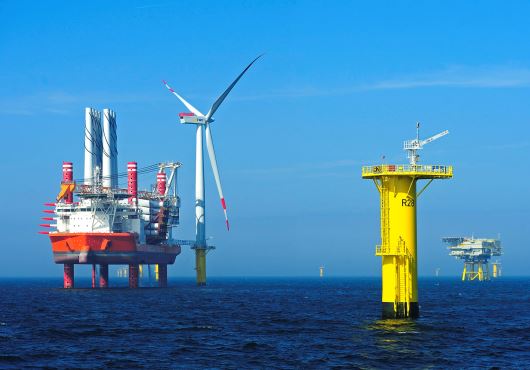CRI Report has released a report titled “Offshore Wind Turbines Market – Analysis of Market Size, Share & Trends for 2019 – 2020 and Forecasts to 2030” which is anticipated to reach USD 81.73 billion by 2030. According to a study by CRI Report, the market is anticipated to portray a CAGR of 21.7% between 2020 and 2030. According to the report, increasing the emissions of the atmosphere and offering policy incentives and tax rebates for the installation of wind towers contribute to growth of the Offshore Wind Tower. Also, governments across different countries are also designed to stimulate a beneficial structure for their policies and regulatory system to promote renewable energy generation globally.
The market report on global Offshore Wind Turbines Market includes in-depth insights as:
- The estimated value of the market was USD 26.24 billion in the year 2020.
- Global Offshore Wind Turbines in APAC held the largest market share in the year 2020.
- Global Offshore Wind Turbines market is segmented by component into Turbine, Substructure, Electrical Infrastructure, Others.
- Global Offshore Wind Turbines market is divided by application into Utility and Non-Utility
- Key players are likely to focus on product innovations and expansion through mergers to retain their positions in developed markets.
“Carbon emissions in the atmosphere are rising and are one of the main anthropological causes of climate change. The key explanation for this carbon pollution is the combustion or decomposition or combustion of fossil fuels such as oil, coal, and gas. A variety of significant proposals are being required to minimize emissions, such as energy conservation at residence or on the job, the use of public transport and renewable resources such as solar, wind, hydro, tidal, geothermal, and biomass, hence accelerating the growth of Offshore Wind Energy”, said a lead analyst at CRI Report.
Offshore wind energy is the technology that allows wind turbines near the oceans and lakes to generate electricity from the wind. Offshore wind power has various advantages, including renewable energy generation. Power is produced at greater speeds onshore than onshore, which has a good impact on market development. The turbine is located at appropriate elevations to generate electrical power from wind. High wind velocity is required for complete turbines with increased capacity.
Global Offshore Wind Turbines market is segmented by component into Turbine, Substructure, Electrical Infrastructure, Others. Turbines accounted for the largest portion of the global market’s revenue. In addition, manufacturers of wind turbines are concentrating on developing novel and standardized products with cheap installation costs, resulting in an increase in market demand for wind turbines.
Key Players in the Market
Some of the key players operating in the global Offshore Wind Turbines Market are Siemens AG, General Electric, Trinity Structural Towers, Inc., ENERCON GmbH, INDRA Renovables, Vestas Wind Systems A/S, Shanghai Taisheng Wind Power Equipment Co. Ltd., Suzlon Energy Limited, CS Wind Corporation, and Other Prominent Players
Get Valuable Insights into Global Offshore Wind Turbines Market
In the new report, CRI Report thrives to present an unbiased analysis of the global Offshore Wind Turbines Market that covers the historical demand data as well as the forecast figures for the period, i.e., 2021-2030. The study includes compelling insights into growth that is witnessed in the market. Global Offshore Wind Turbines market is segmented by component into Turbine, Substructure, Electrical Infrastructure, Others. Global Offshore Wind Turbines market is divided by application into Utility and Non-Utility. Geographically, the market is segmented into North America, Latin America, Europe, Asia Pacific, and Middle East, and Africa.

